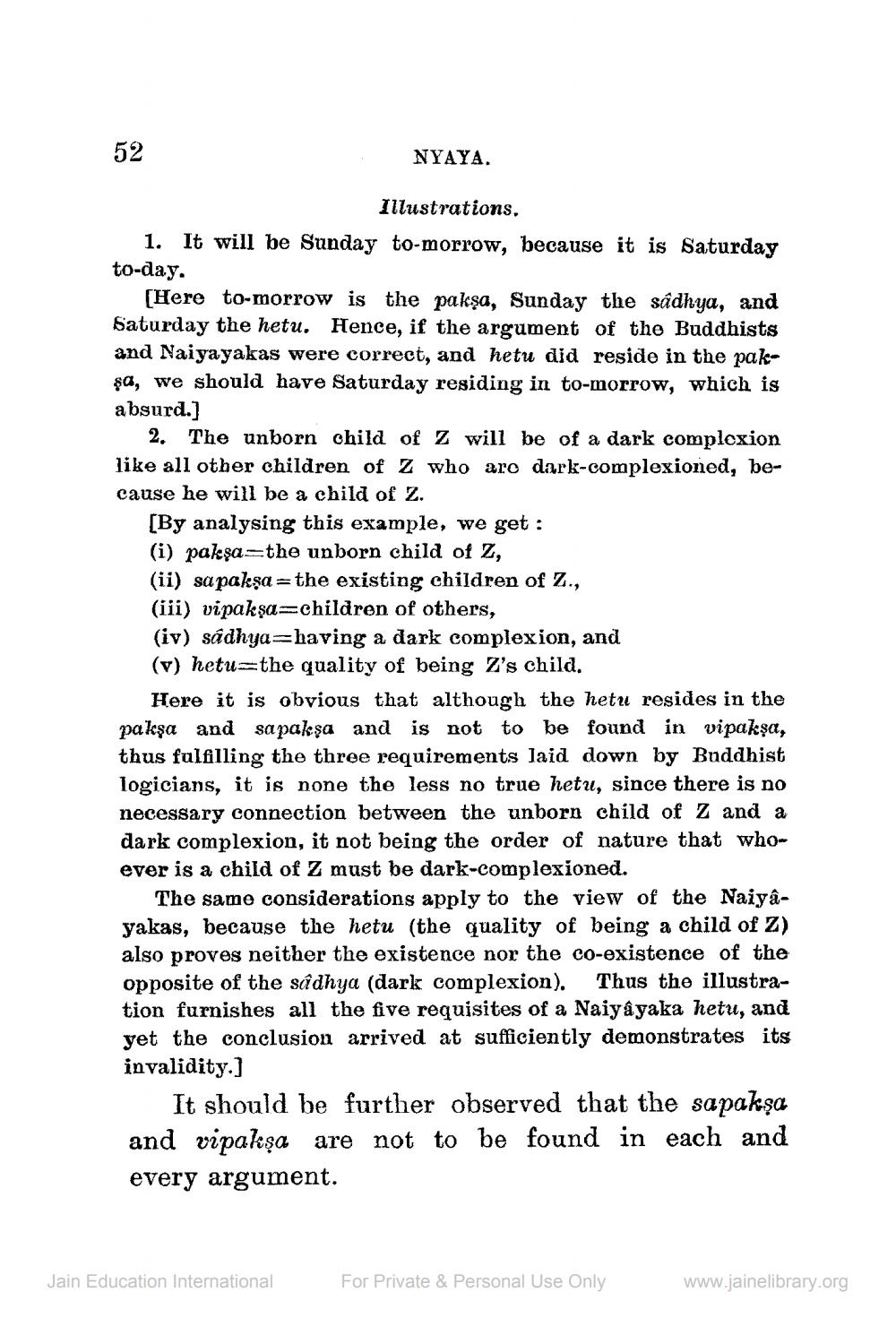________________
52
NYAYA.
Illustrations, 1. It will be Sunday to-morrow, because it is Saturday to-day.
Here to-morrow is the pakşa, Sunday the sádhya, and Saturday the hetu. Hence, if the argument of the Buddhists and Naiya yakas were correct, and hetu did reside in the pak$a, we should have Saturday residing in to-morrow, which is absurd.]
2. The unborn child of Z will be of a dark complexion like all other children of Z who aro dark-complexioned, because he will be a child of Z.
[By analysing this example, we get : (i) paksa=the unborn child of Z, (ii) sapakşa = the existing children of Z., (iii) vipaksa=children of others, (iv) sádhya=having a dark complexion, and (v) hetu=the quality of being Z's child.
Here it is obvious that although the hetu resides in the pakşa and sa paksa and is not to be found in vipakşa, thus fulfilling the three requirements laid down by Buddhist logicians, it is none the less no true hetu, since there is no necessary connection between the unborn child of Z and a dark complexion, it not being the order of nature that whoever is a child of Z must be dark-complexioned.
The same considerations apply to the view of the Naiyayakas, because the hetu (the quality of being a child of Z) also proves neither the existence nor the co-existence of th opposite of the sâdhya (dark complexion). Thus the illustration furnishes all the five requisites of a Naiyâyaka hetu, and yet the conclusion arrived at sufficiently demonstrates its invalidity.)
It should be further observed that the sapakşa and vipakşa are not to be found in each and every argument.
Jain Education International
For Private & Personal Use Only
www.jainelibrary.org




